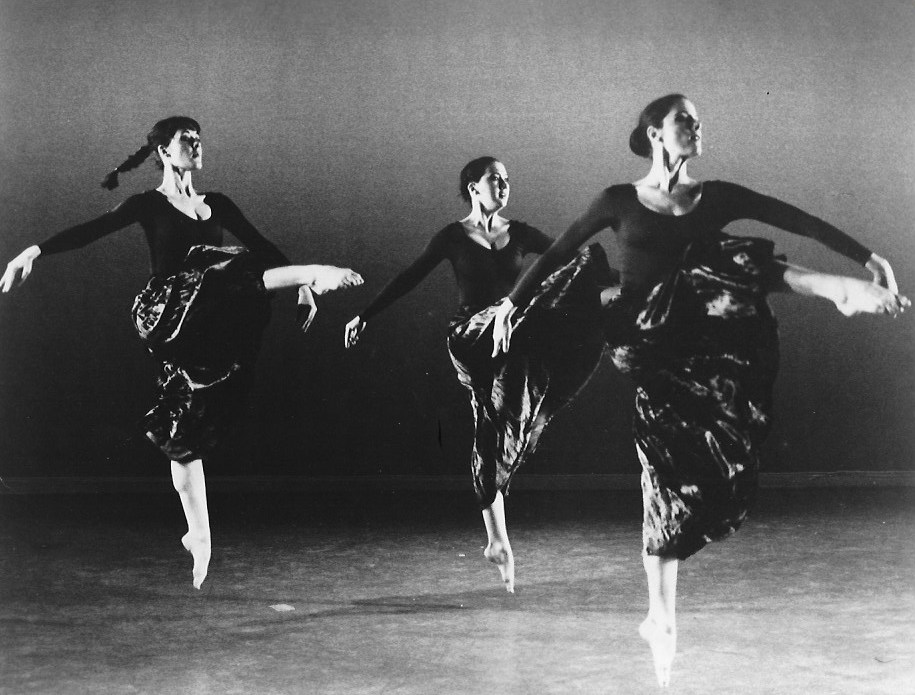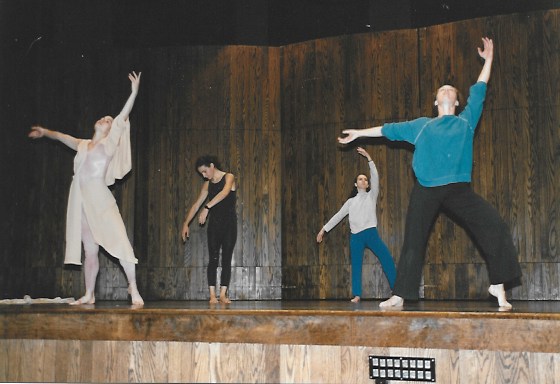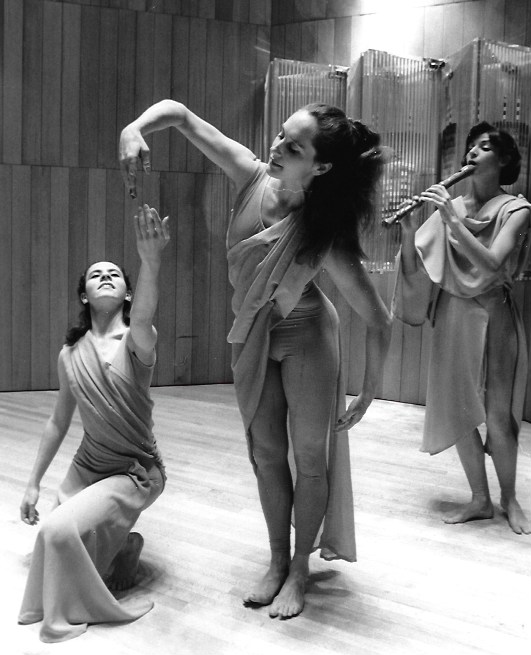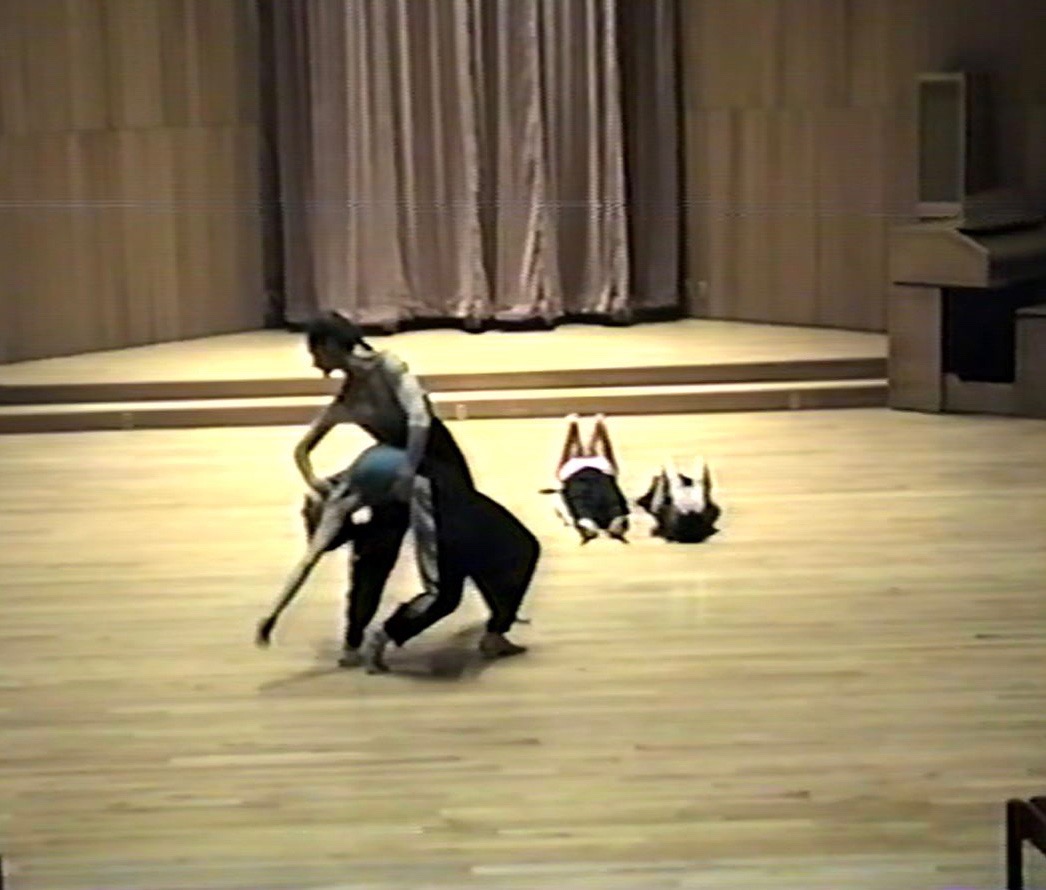Performances – whether in services or as concerts – were growing for both the New York and Florida companies now that bookings were arranged by the Jewish Welfare Board’s Lecture Bureau. In Tallahassee, Michael Bush consistently danced with the company but in New York it seemed like every few months we were auditioning for a new male dancer. In the fall of 1980 the company’s female dancers (Lynn Elliott, Beatrice Bogorad, Barbara Finder, and Nanette Josyln) were all tall. So when I posted an audition notice I indicated that I was looking for a tall male dancer.
Continuing our relationship with Hebrew Union College – Jewish Institute of Religion (HUC-JIR) we were now rehearsing and working out of their new campus on West 4thStreet. The recently constructed five-story building took up the entire block from Mercer to Broadway. The chapel offered a lot of flexibility in how it could be set up and would prove to be an excellent performing space. In the lower level were several large rooms that worked for rehearsals (although as the repertory grew with more leaps and falls, we later rented rehearsal space in Chinatown that had beautiful, safer floors for dancers).
I made several attempts to see how I might blend the two companies together. For one tour in upstate New York, two Tallahassee dancers, Judith Blumberg and Michael Bush, joined Bea Bogorad, Barbara Finder, and Lynn Elliot for several performances. At another time Lynn Elliott came to Tallahassee to rehearse and then perform in Savannah. Blending the companies didn’t really achieve the ensemble feeling that each group had independently and which I valued, so I chose to have the two companies operate separately but with similar repertory.
The New York company had a booking on a Friday night in the fall of 1980 as part of the Shabbat service, at a reform congregation on Long Island. I had arrived in New York a week before and posted audition notices for a tall male dancer. Several men showed up but Rick Jacobs was the obvious choice. Rick is 6’4” and was then a fourth-year rabbinic student at the New York Campus. In an article in The Chronicle (a publication of HUC-JIR) two years later, Rick told the writer about this time in his life:
Rick was living what he described as a “very schizophrenic” life without much hope that he could integrate his commitment to the rabbinate and his love of dance. It had been a constant struggle to continue the dance training he had begun as an undergraduate at the University of California at Santa Barbara. He managed to find sympathetic dance instructors in Jerusalem and Los Angeles, and had taught dance in the Reform movement’s summer camps……
Rick auditioned on Tuesday and danced with the company on Friday. He quickly learned the two pieces for Friday’s service, Sabbath Woman and In Praise.



Nanette Joslyn in the “Barechu” duet
from In Praise

While Rick only had to learn those two pieces for the Friday night service, Avodah’s repertory had grown to five regularly performed pieces and Rick soon learned two more pieces of the repertory, I Never Saw Another Butterfly and the part of Abraham in Sarah.
With Rick joining the company, new ideas began to fly and it wasn’t long before Rick and I were collaborating on a new piece based on rituals of the Torah service. Earlier that year I had met David Finko, a composer and recent immigrant from the Soviet Union. David had written symphonies and other major works that were performed in the Soviet Union and Europe. I suggested to Rick that David might be a good choice to compose music for our new piece. So one day we drove down to Philadelphia to meet with David and talk to him about our idea for the new piece. I remember it as an inspiring day with very warm hospitality provided by David’s lovely wife who cooked a special meal for us. We shared our ideas about a piece in five parts opening with a meditation section based on ritual movement. I don’t remember much about three of the sections as they ended up being cut about a year later.
My scrapbook provides some useful information. The Temple Bulletin from Rodef Shalom in Pittsburgh, where the piece would receive its premiere having been commissioned by the 125thAnniversary Fund of the congregation, describes the new work, M’Vakshei Or (“Seekers of Light”) as blending words, dance and music “together to encourage modern Jews to search Torah for its wisdom.” It continues describing the piece: “Establishing a prayerful mood, the dance cantata presents the ‘sacred weaving of tales’ and ‘laws that guide our lives.’”
Helping to create M’Vakshei Or and dancing in the first performances of the piece were other company members. Lynn Elliott, who was in the first New York City performances, continued working with the company, bringing her background from Interlocken Arts Academy, college training at SUNY at Purchase, studies with Alfredo Corvino and performing experience with the Dance Circle Company. Joining her was Nanette Joslyn from Los Angeles where she performed at Disneyland and with the Santa Barbara Ballet. Barbara Finder had an MFA in Dance from the University of Michigan and also studied dance at the Martha Graham Studio, and with both the Jose Limon Company and Anna Sokolow. Dina McDermott grew up in New Jersey and had recently completed her BFA from Juilliard.
Beatrice Bogorad was no longer working with the company, having begun work with Charlie Moulton, and then later with Susan Marshall. Luckily a few years later her schedule made it possible for her to again work with Avodah.
Barbara Finder moved on and by the time the piece was performed in New York City at the Emanu-El Midtown Y on 14thStreet, Roberta Behrendt had joined the company. Roberta had attended the Alabama School of the Arts and had a BA in dance from Florida State University and I was of course aware of Florida State’s fine dance department. I was thrilled to have so many excellent dancers to work with.

Repertory performed on May 1 – 2, 1982 at the 14thStreet Y was Sabbath Woman, Sarah, Mother of the Bride, Noshing,and Kaddish. I’ll have more to say about the two comic pieces Mother of the Bride and Noshing in later blogs, and Kaddish when I talk about more repertory created for Holocaust Programs. But my thread for the next several blogs will relate to what we learned from M’Vakshei Or.

 Print This Post
Print This Post
Links to Recent Blogs
- The Pioneers of Modern Dance: My Firsthand Experience
- A Visit to a Costa Rican Art Museum Triggers a Fascination with Mascaradas
- Thoughts after Streaming a Memorial for Dance Critic Jack Anderson
- Keeping Up With What is Happening in the Dance World
- A Sijo Poem for the Winter Solstice
- Episode 33: The Universal Dancer Podcast – I’m Interviewed by Leslie Zehr
- The National Symphony of Costa Rica
- Can you go home again?
- Odd Thing to Find on eBay
- Chopping in the Kitchen



























